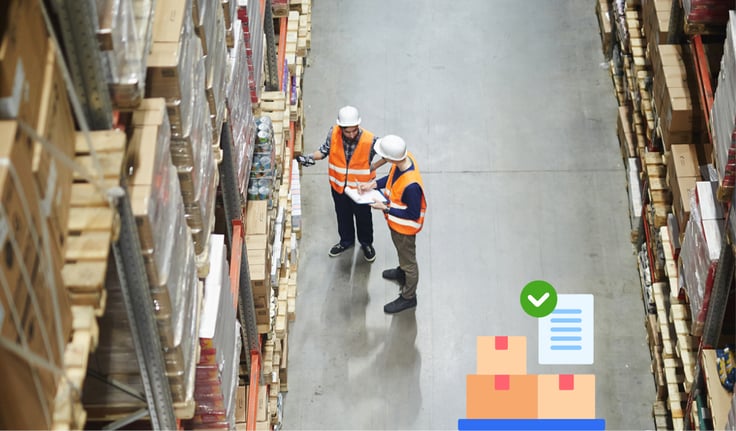You may also like
Subscribe now
for a weekly blog digest containing growth tips, industry updates, and product announcements!
4 Minute Read
There are at least two reasons to increase the sustainability of your last-mile delivery operation. The most discussed, of course, is reducing carbon emissions. The second is lowering your costs. With last-mile deliveries climbing, the fuel burned to make those deliveries contributes a considerable portion of overall logistics emissions. That simple fact points to a key to both reducing emissions—good for the planet and for customers’ opinions of your company—and to lowering your costs: Efficiency. Delivery operations using DispatchTrack confirm it has the technology and the tools to help you reduce emissions and increase efficiency with green logistics.
Driving fewer miles burns less fuel, and the AI-powered routing engine in DispatchTrack has proven to reduce miles driven (and fuel consumed) by more than 10%. How? Our routing engine tests thousands of potential routes and stop sequences for your entire fleet in less time than it takes you to refill your coffee. It not only calculates the shortest distance between stops, but also chooses the most appropriate trucks for each order and considers load factors, traffic, and crew skills and performance.
Fleet capacity is optimized, so trucks go out level loaded and are able to make more stops per truck per day. For operations like wholesalers with regular customers, DispatchTrack offers hybrid routing, which combines fixed stops to keep prime customers pleased with the efficiency of dynamic routing for those with flexible delivery windows. DispatchTrack also incorporates AI and machine learning so that, over time, it becomes even more efficient as it learns your operation, delivery area, and customers, producing ETAs that are 98% accurate.
Boosting your FADR can dramatically reduce carbon emissions and costs. It should be one of your most important KPIs. Delivery organizations say the customer communications suite in DispatchTrack increased their FADR quickly. Self-scheduling in particular can have a dramatic effect. From an online link, DispatchTrack offers customers a menu of delivery windows that are AI-optimized for your orders, your fleet, and your routes.
When customers pick their own windows, they are more likely to be there to receive the delivery. Using DispatchTrack’s tools, you can offer both automated and live, two-way communications. Customers always know when their delivery is scheduled, where their order is and can track your truck live. If needed (to give additional delivery instructions or a gate code for example) live communications connect the customer, driver, and dispatcher in real time. Automated surveys surface areas for improvement and confirm customer satisfaction. Customers are more satisfied, more deliveries are successful and your dispatchers receive fewer “where is my order calls,” lowering labor costs and increasing efficiency.
The DispatchTrack mobile app enables drivers to send order updates to dispatchers automatically including photos, videos, and notes to document successful and unsuccessful deliveries. They can note whether an order should be scheduled for redelivery, redelivered after fixing minor damage or canceled and restocked. When the truck returns to the loading dock, dispatchers and managers already know which orders need their attention, so you can handle returns more efficiently and reduce emissions and costs in reverse logistics.
DispatchTrack gathers, tracks and records an enormous amount of data for each order from order-in to done-and-delivered and beyond. During daily execution, critical details — orders, routes, real-time tracking, deliveries — are summarized on our single-pane-of-glass dashboard in easy to read graphics. Exceptions are flagged and dispatchers and managers can drill down to details of each truck, route, order and delivery, taking action in real time to prevent incidents from becoming problems. That data remains in a single data repository where DispatchTrack’s ML uses it to improve routing efficiency. You can quickly pull a range of standardized reports — fleet capacity utilization, cost to serve, productivity by location and more — and create your own customized reports for more specific analysis. This lets you see opportunities to further cut waste and inefficiency.
DispatchTrack’s analytics give you the power to understand your carbon footprint more easily. Combining routing information with data about the individual service units in your fleet can yield a close estimate of carbon emitted for each stop. This allows dispatchers to prefer routes with lower carbon, and can be leveraged to educate customers about the carbon cost of their deliveries when choosing delivery speed. Encourage customers to cut carbon by incentivizing slower deliveries like Amazon’s “get products in fewer boxes.” Offering customers a slower, more planet-friendly delivery cuts carbon while also saving fuel, money and labor.
Sustainability is a practice that benefits all of us, but it has particular benefits for last-mile delivery operators. In a recent study by the Capgemini Institute, two-thirds of consumers said they choose products and services based on their perceived environmental friendliness. On the supplier side, 77% of businesses said their sustainability efforts increased customer loyalty and 63% saw an increase in revenue. That applies not just to brands and retailers, but to their logistics partners as well.
DispatchTrack has powerful tools to help you increase sustainability in last-mile logistics, driven by the industry’s smartest routing engine and cutting-edge communications tools.
Sustainability can “green up” not just your operation by reducing carbon, but also your bottom line by reducing costs and increasing efficiency. With the sophisticated AI baked into its core processes, DispatchTrack leads the way for operators to reach that greener future.
for a weekly blog digest containing growth tips, industry updates, and product announcements!